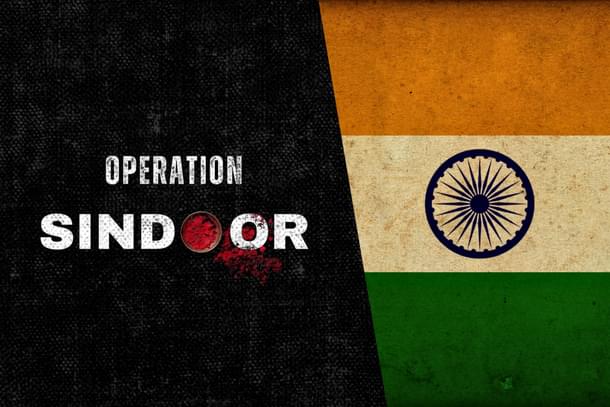Ideas
Operation Sindoor – 8 Learnings From 7 May
Venu Gopal Narayanan
May 08, 2025, 01:20 PM | Updated May 13, 2025, 11:27 AM IST
Save & read from anywhere!
Bookmark stories for easy access on any device or the Swarajya app.


A fortnight ago, public speculation was rife on how India would respond to the barbaric terrorist attack at Pahalgam.
Seized by the popular mood, this writer’s hot take was that the Indian Navy would target some serious infrastructure in Pakistan, perhaps the gas terminal in Karachi. All of us got it wrong when the government launched a sharp, coordinated, tri-services attack on terrorist training camps across the border.
Operation Sindoor was a blistering success. There was copious evidence to boot. The ball now lies firmly in Pakistan’s court on whether to escalate further, or not. As of now, they have restricted themselves to indiscriminate shelling of locations near the Line of Control in Jammu and Kashmir, killing over a dozen civilians and injuring dozens more.
Thus, as a mild lull develops in other sectors—perhaps very temporarily—it would be useful to derive some learnings from the Indian attacks.
One, evidence made public during the government press conference shows that we have formally registered our first drone attack on enemy soil. The fact that we were able to destroy a target well behind the international border without being detected or thwarted will be a big boost to drone designers, military planners, and operators. This is the future of tactical warfare, and it is good to get some combat experience under the belt.
Two, our communications have been tested in combat. A ‘network-centric’ military is a fundamental requirement for warfare in this digital age, and the success of the strike shows that India was able to execute multiple missions simultaneously, relaying both instructions and information across a variety of weapons platforms and weapons in a secure, coordinated manner.
Three, by corollary—and while we will never get official confirmation of this—it is clear that both our electronic warfare options and electronic countermeasures have also been successfully tested in battle.
Four, more importantly, we have also gotten an extensive look and feel of Pakistan’s air defence network first-hand. Every dash across the border by our drones, missiles, or fighter jets was a severe test of their capabilities to detect and interdict such attacks. The nature of the Pakistani response, its efficacy, and the time taken by them to react is invaluable information which will help us plan future operations better.
For sure, we already had an excellent idea of Pakistani capabilities in this regard, but now our new knowledge has plugged a number of gaps, raising our confidence levels.
Equally importantly, and for all the exhaustive training our military does, young warriors have now finally gotten the opportunity to graduate from theory to practice. No doubt, the feedback loop will be buzzing, generating new iterations of ruses and tactics to be employed the next time around.
Five, a whole host of Indian military platforms have been put to the ultimate test of real action. It is a broad list, ranging from a new generation of missiles now in our stable, their seekers, their sensors, their accuracy, their functioning, various electronic pods, countermeasures, radars, and even something as basic as inter-service coordination (it was a tri-service operation). The evidence at hand suggests that we also polished our deep-kill skills through the firing of an air-launched ballistic missile (ALBM).
Six, perhaps critically, we have gotten a close look at the Chinese-made PL-15 air-to-air beyond-visual-range missile. Its specifications have hitherto been a very closely guarded secret, yet today, India is the only nation on the planet (of those not operating these missiles) which knows how good they are. And now that we know, we can start designing better ways to counter them. This information is worth its weight in gold.
Seven, from a strategic standpoint, we have conducted a new test of the escalation ladder. Naturally, this is a work in progress since Pakistan’s response to Op Sindoor is still unknown at present. Simultaneously, Pakistan’s nuclear doctrine has also been tested once more.
Over the past fortnight, numerous Pakistani lawmakers and senior officials have blithely stated with flagrant irresponsibility that atomic bombs would be used if India were to ever attack Pakistan. In one sense, such chatter only reinforces an old adage—that irresponsible nations should not possess nuclear weapons.
Eight, it appears that we have kept a significant portion of our strengths in reserve. This is the restraint Foreign Secretary Vikram Misri underscored in his statement. The list is long and menacing, ranging from the Indian Navy, suppression or destruction of enemy air defences (SEAD/DEAD), and that one missile which no one talks about—the Shaurya. The day the Navy gets in on the act in meaningful measure, it will be a very different ballgame.
All in all, apart from the moral necessity to punish Pakistan for its evil deeds, Operation Sindoor was a military necessity to test our own warfighting worth. Even losses, if any, constitute a learning, since a good military needs to see combat once in a while if it is to effectively safeguard the nation’s interests.
Venu Gopal Narayanan is an independent upstream petroleum consultant who focuses on energy, geopolitics, current affairs and electoral arithmetic. He tweets at @ideorogue.





